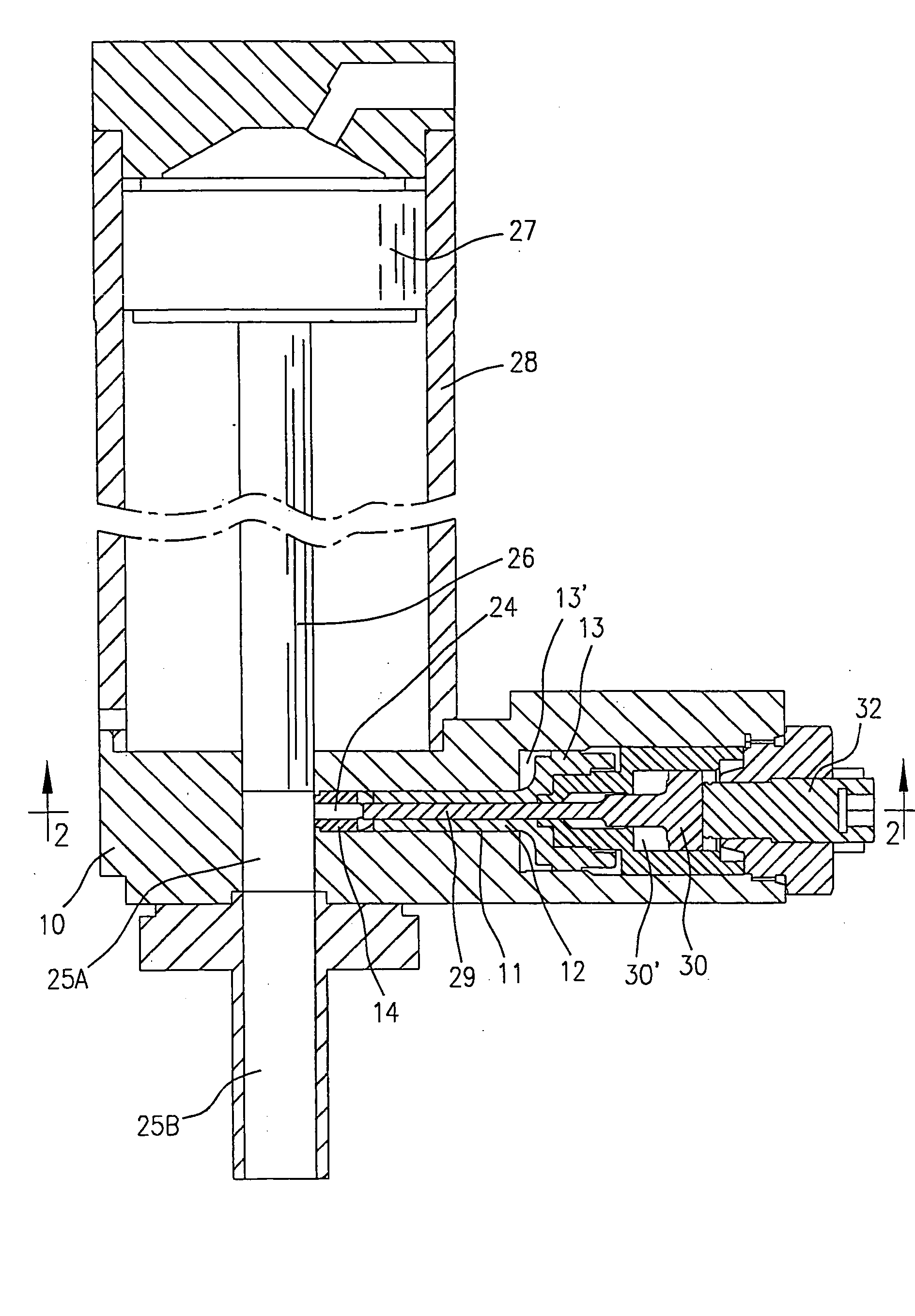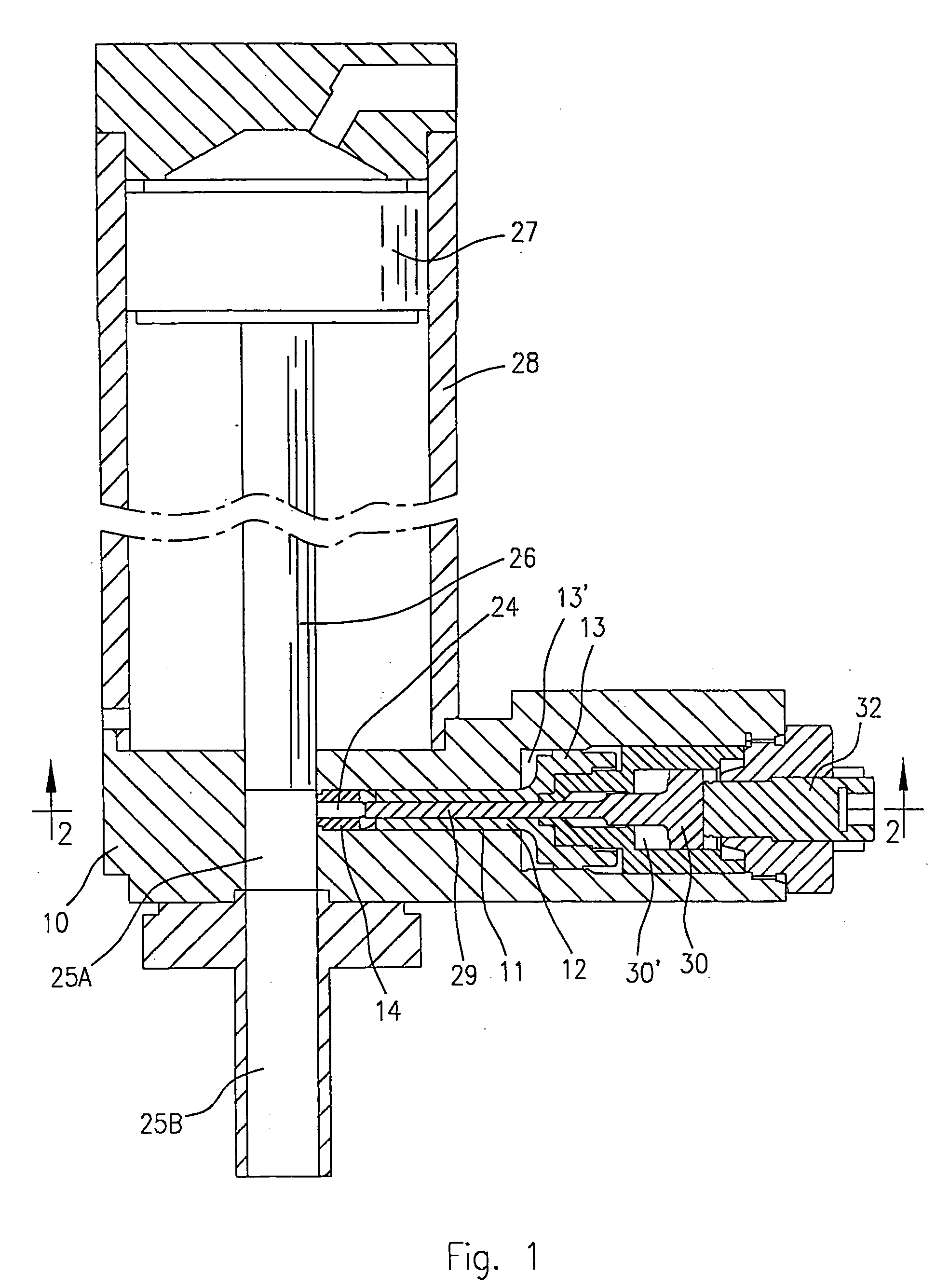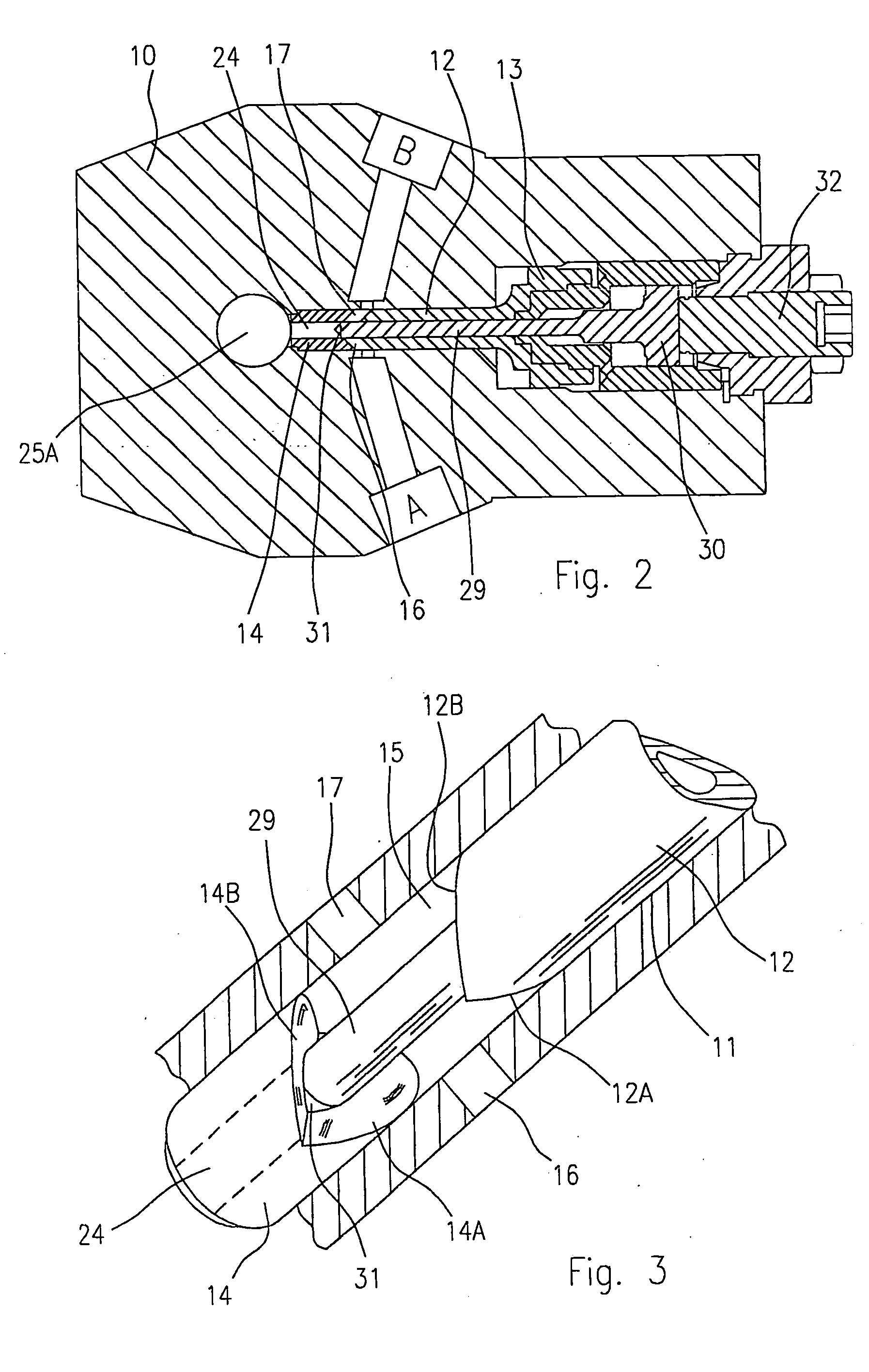Co-injection mixing method and apparatus
a technology of chemical components and mixing methods, applied in the direction of mixers, mixer accessories, mixing, etc., can solve the problems of functional and structural complexity of the apparatus, good manual skills, and nevertheless a number of limitations and drawbacks
- Summary
- Abstract
- Description
- Claims
- Application Information
AI Technical Summary
Benefits of technology
Problems solved by technology
Method used
Image
Examples
third embodiment
[0100] The FIGS. 13, 14, 15 and 16 show a third embodiment substantially similar to that of the previous figures, which has been modified in the shape of the opposite ends of the spool member 12 and of the fixed bush 14 defining the mixing chamber, to form four jets.
[0101] In this case, the common pressure and feeding chamber 15 can be provided with four inlet ports for four components; consequently, both the tip of the spool member 12 and the rear end of the fixed bush 14 will be provided with crossed V-shaped cuts, or with V-shaped slanting surfaces 12′, 12″ angularly slanting and circumferentially spaced apart from each other, as for example shown at the fore end of the spool member 12 in the perspective view of FIG. 16.
[0102] Here too, the solution of FIGS. 13-16 will operate in a wholly identical way to that described for the previous examples, with the sole difference that now four narrow co-injection orifices, in opposite pairs, are formed, together with the corresponding fo...
fourth embodiment
[0104]FIGS. 17, 18 and 19 show a fourth embodiment similar to that of FIGS. 5, 7 and 9 which has been modified to obtain an internal recirculation of the components; in the previous cases, the recirculation of the components could be carried out outside the mixing apparatus, by means of an appropriate valve assembly, in a per se known way.
[0105] Conversely, in the case of FIGS. 17, 18 and 19, the recirculation is carried out inside the apparatus, for example by providing in a per se known manner a recycling port 34 and 35 in correspondence with each inlet port 16 and 17, and by providing the movable spool 12 with longitudinal slots 36 and 37, to flow each component between inlet ports 16, 17 and recirculation ports 34, 35.
[0106] With the exception of the recirculation step, the apparatus of the example shown in FIGS. 17, 18 and 19, again operates in an identical way to that of the previous examples. Therefore, the same reference numbers have again been used to indicate similar or e...
PUM
| Property | Measurement | Unit |
|---|---|---|
| pressure | aaaaa | aaaaa |
| pressure | aaaaa | aaaaa |
| angle | aaaaa | aaaaa |
Abstract
Description
Claims
Application Information
 Login to View More
Login to View More - R&D
- Intellectual Property
- Life Sciences
- Materials
- Tech Scout
- Unparalleled Data Quality
- Higher Quality Content
- 60% Fewer Hallucinations
Browse by: Latest US Patents, China's latest patents, Technical Efficacy Thesaurus, Application Domain, Technology Topic, Popular Technical Reports.
© 2025 PatSnap. All rights reserved.Legal|Privacy policy|Modern Slavery Act Transparency Statement|Sitemap|About US| Contact US: help@patsnap.com



